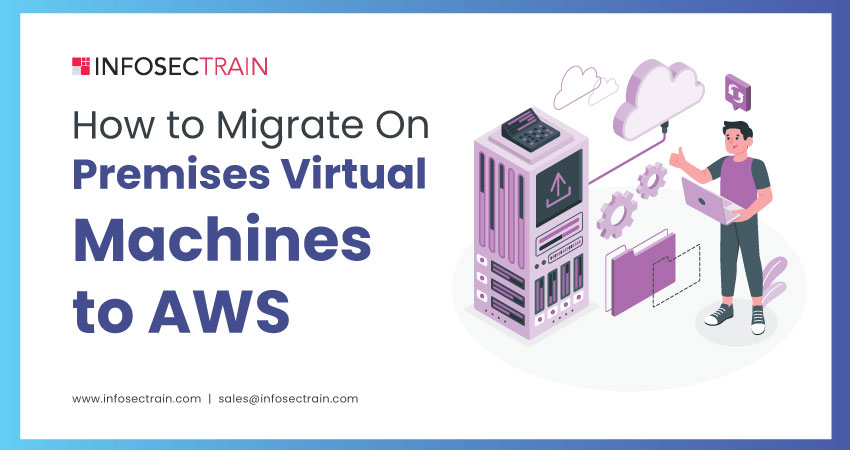Cloud
computing platforms like Amazon Web Services (AWS) have become a top option for
hosting and operating virtual environments. Migrating on-premises Virtual Machines (VMs) to Amazon
Web Services (AWS) can significantly enhance an organization's
scalability, reliability, and flexibility while reducing the overhead
associated with physical data centers.
Consideration and Prerequisites Before Migrating VM to AWS
When migrating on-premises VMs to AWS, ensure you have an active AWS account in a region that supports the AWS Application Migration Service. Ensuring seamless network connectivity between your source server (on-premises) and the target EC2 (Elastic Compute Cloud) server is paramount for a successful migration. This connectivity can be achieved through AWS Direct Connect, a VPN, or the Internet.
However, it's essential to acknowledge certain limitations. These include the availability of the service in specific AWS regions and compatibility with certain operating systems. For the most current information, refer to AWS documentation for supported regions and operating systems.
Architecture Overview
●
Source Technology
Stack:
The first thing you should consider is a server (physical, virtual, or
cloud-hosted) running an operating system that Amazon
EC2 supports.
●
Target Technology
Stack:
The migration targets an Amazon EC2 instance equipped with Amazon Elastic Block Store (EBS), running the same
operating system as the source VM.
Migration Steps
1. Initialize AWS Application Migration Service
The migration process starts with initializing the AWS Application Migration Service in your AWS console. This step is crucial for setting the stage for the entire migration process.
2. Set Up Staging Area
The second step involves configuring the staging area by setting up server configurations and reporting. This includes selecting your staging area subnet, replication server instance type, and EBS volume type, among other settings.
3. Install AWS Replication Agents
The installation of AWS Replication Agent on your source servers to facilitate continuous block-level data replication. This step requires generating temporary AWS Identity and Access Management (IAM) credentials for a secure installation process.
4. Data Replication
Allow time for initial data replication to complete. This stage is visible through the Application Migration Service console, where you can monitor the replication status.
5. Configure Launch Settings
Before the test and cutover phases, configure the launch settings for your target EC2 instances. This involves specifying server details and configuring EC2 launch template settings.
6. Perform a Test
Testing is critical to ensure the migrated VMs function as expected in their new AWS environment. Launch test instances for each VM and conduct thorough testing.
7. Schedule and Perform a Cutover
Coordinate a cutover window with relevant stakeholders. During this window, perform the final migration steps to switch from your on-premises VMs to the AWS EC2 instances. Once the servers are launched, verify the success of the cutover process.
8. Finalize the Migration
After successful testing and verification post-cutover, finalize the migration process in the AWS Application Migration Service console. This action marks the completion of your migration journey.
Best Practices
●
Avoid taking the source server offline or
rebooting it until the migration is fully completed.
●
Allocate sufficient time for User Acceptance
Testing (UAT) to identify and resolve issues well before the cutover.
●
Regularly monitor server replication status to
address any issues that arise promptly.
● Utilize temporary IAM credentials for enhanced security during the migration process.
AWS with InfosecTrain
We hope you understand the procedure of migrating
an on-premises VM to AWS. To delve deeper, consider enrolling in InfosecTrain‘s AWS combo
training course. This combo course is tailored to deepen your knowledge of AWS
services. Through expert instruction and practical exercises, you will gain
invaluable skills, preparing you for advanced cloud security and management
roles.

